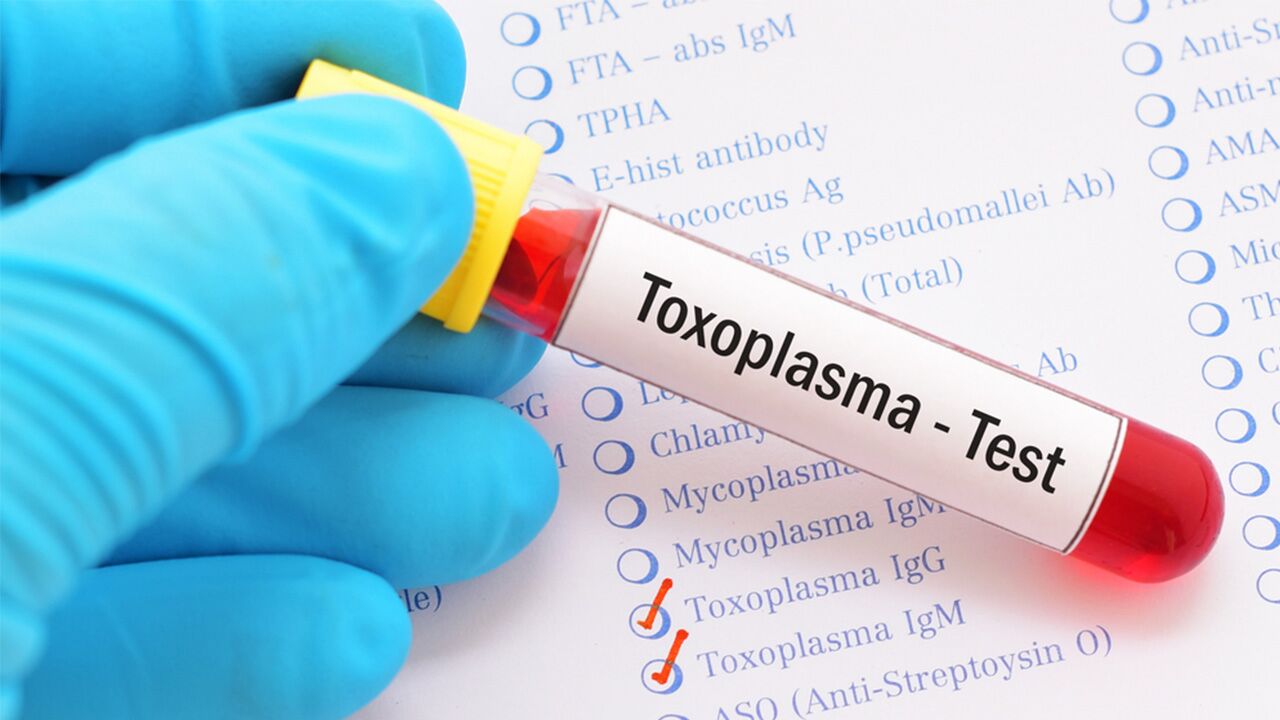Toxoplasmosis in Humans: Symptoms to Watch out For
 By: by Amino Science
By: by Amino Science

Toxoplasmosis is an infectious disease that’s caused by Toxoplasma gondii—a parasite that’s been called the most successful parasite in the world. According to the Centers for Disease Control and Prevention (CDC), more than 40 million people in the United States may be living with the parasite. By contrast, upwards of 60% of individuals may harbor T. gondii in areas of the world with the highest rates of infection. But this little parasite has a complex relationship with humans that may go far beyond its ability to cause disease. So come with us as we explore toxoplasmosis in humans and uncover everything you need to know about T. gondii.
How T. Gondii Causes Toxoplasmosis
To understand how T. gondii causes toxoplasmosis, it’s necessary to have a basic grasp of the life cycle of the parasite. To begin with, cats are considered its definitive host, as T. gondii needs them to reproduce and form eggs. But cats pick up the parasite from intermediate hosts—birds, rodents, etc.—in whom T. gondii creates clones of itself that are then encapsulated in cysts.
After ingesting an infected mouse, for example, the cysts open inside the cat’s digestive tract, reproduce, and form eggs and are deposited in feces over the course of 1 to 2 weeks. When other animals, including humans, come in contact with the eggs, they then become the intermediate host and carry the T. gondii cysts for the rest of their lives—until they become prey for a cat or, like us, die and pass the parasite back into the earth.
While exposure to cat feces is one of the primary ways in which toxoplasmosis is transmitted to humans, it’s also possible to contract the disease from other sources, including:
- Soil: T. gondii can live in the environment for over a year, and gardeners and other individuals who handle soil are at risk of contracting the disease.
- Water: People may ingest the parasite when drinking contaminated water.
- Undercooked or raw meat: T. gondii is found most commonly in pork, lamb, and venison and can be picked up by eating raw or undercooked meat or failing to wash knives, cutting boards, etc.
- Blood transfusions and organ transplants: People who receive blood or organs from donors infected with T. gondii may become infected as well.
- Produce: Eating or handling contaminated fruits and vegetables can lead to infection with the parasite.
- Unpasteurized dairy products: People who consume unpasteurized dairy products may become infected with T. gondii.
- Mother-to-child transmission: Women who become infected with the parasite right before or during a pregnancy can pass the infection on to their infant.
Risk Factors for Toxoplasmosis
The good news is that people with healthy immune systems have little to worry about when it comes to T. gondii and toxoplasmosis. However, individuals with weak immune systems due to medical conditions like human immunodeficiency virus/acquired immunodeficiency syndrome (HIV/AIDS), chemotherapy, or immunosuppressant medications have a greater risk of contracting the disease and suffering complications.
In addition, toxoplasmosis affects 1 out of every 1,000 to 8,000 infants born in the United States and can also lead to miscarriage or stillbirth. And infants born to infected mothers are at increased risk of several potentially serious complications, including:
- Prematurity
- Low birth weight
- Vision problems
- Hearing loss
- Seizures
- Liver and spleen enlargement
- Jaundice
- Learning disabilities
Symptoms of Toxoplasmosis
As just mentioned, people with healthy immune systems are generally not sickened by T. gondii. But if toxoplasmosis does occur, it may present with flu-like symptoms, such as:
- Body aches
- Headache
- Swollen lymph nodes
- Fever
- Fatigue
And in individuals with weakened immune systems, the following additional symptoms may be present:
- Confusion
- Coordination problems
- Lung infections
- Blurry vision
Toxoplasmosis Treatment
While a healthy person will often not show any signs of infection, in rare cases, some individuals may develop eye infections (ocular toxoplasmosis) that can lead to blindness if not treated. However, when signs of the illness are present, several medications are effective in eliminating the infection. These include:
- Pyrimethamine
- Sulfadiazine
- Leucovorin
- Clindamycin
The antiparasitic drug pyrimethamine inhibits the body’s synthesis of folic acid and can lead to side effects of liver toxicity and bone marrow suppression, so your health care professional will monitor treatment and may recommend folic acid supplementation.
Although pregnant women are not routinely tested for toxoplasmosis, if your health care provider suspects the disease, blood tests to check for the presence of antibodies to T. gondii may be performed.
If test results are positive and the infection occurs during the first 16 weeks of the pregnancy, the antibiotic spiramycin may be given to reduce the risk of nervous system complications in the infant.
If infection occurs after 16 weeks, pyrimethamine, sulfadiazine, and leucovorin may be used instead. The same therapy may also be recommended for infants born with or suspected of being at risk of developing congenital toxoplasmosis.
Preventing Toxoplasmosis
Anyone at risk of developing toxoplasmosis can take steps to avoid contact with T. gondii. Here are some tips for avoiding the parasite.
- Garden in gloves. Wear gloves when handling soil, and wash with soap and water after you’re finished.
- Avoid undercooked or raw meat. Undercooked and raw meat, including cured meat, can contain T. gondii.
- Wash and peel fruits and vegetables. Thoroughly wash and peel any fresh produce before eating.
- Avoid unpasteurized dairy products. Dairy products that haven’t undergone the pasteurization process may occasionally contain T. gondii.
- Wash kitchen utensils and appliances. Washing utensils and appliances with soap and water is especially important after preparing raw meat and produce.
- Cover your sandbox. Keep your outdoor sandbox covered so passing animals don’t use it as a litter box.
- Avoid stray cats. Most cats become infected with T. gondii through hunting and eating infected prey.
In addition, women who are pregnant and have cats should have someone else clean their cat’s litter box or wear gloves and a mask to avoid coming in contact with feces. Cat litter should also be changed daily, as T. gondii requires 1 to 5 days in a cat’s feces before it becomes capable of causing infection.
You can boost your immune system and strengthen overall health by taking essential amino acids.
T. Gondii and Behavior
It may sound unbelievable that a parasite can invade our brains and manipulate our behavior, but that’s what T. gondii does in other animals, and more and more studies are indicating that that’s what it does in humans as well.
It probably sounds like something out of science fiction, but the complex life cycle of T. gondii means that it’s evolved to manipulate its various hosts to get where it wants to go. For rodents, this means altering their behavior to make them less afraid of cats and thus easier prey. And for humans? Well, for us it can mean many things.
But some studies have shown that chronic latent infection with T. gondii makes us take more risks as well. And this has been linked to everything from risky driving and increased accidents to the desire to start a business.
Additional studies have even shown a correlation between infection with the parasite and higher rates of schizophrenia, while others have shown that T. gondii can lead to increased reaction times, heightened aggression in women, and an overall increase in masculine traits.
Taken as a whole, it’s easy to draw the conclusion that T. gondii is indeed manipulating humans in the same way it manipulates other species—and many have speculated that the parasite may even influence human culture. But studies are ongoing, and we still have a lot to learn before we pull all the threads that bind us to this most successful of parasites.


Up to 25% off Amino
Shop NowTAGS: conditions
Join the Community
Comments (0)
Most Craveable Recipes




 833-264-6620
833-264-6620



















